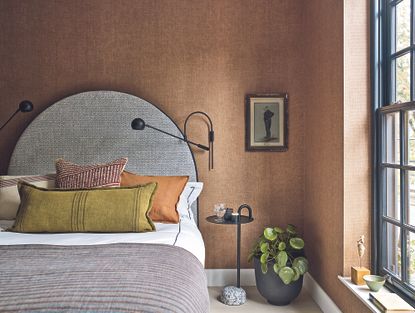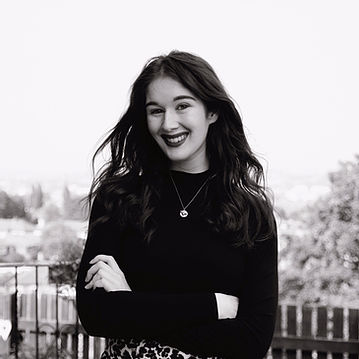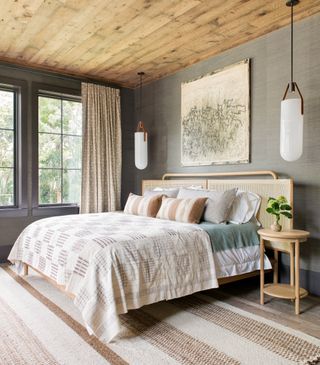What LED light color is best for sleep – and the ones to avoid to prevent bad sleep
Switching to this hue will ease your body into a deep sleep – but there are lights to avoid, too


The question of what LED light color is best for sleep may seem relative, but your choice in tone is surprisingly impactful in achieving a peaceful slumber.
If you're wondering how to sleep better, you may want to consider painting your space a more therapeutic color (light blue is approved by the experts). Or you may want to upgrade your best mattress to ensure it's perfect for your needs. However, your bedroom lighting ideas are also vital in achieving a good night's sleep – and that includes knowing what LED light color is best for sleep.
While this factor may appear small in the grand scheme of your bedroom, experts warn that your chosen tone may harm your sleep quality. So, if you're struggling to fall (and stay) asleep at night, it is worth knowing about its power.
What LED light color is best for sleep?

Light and wellbeing experts agree red is the best color for sleep – but what makes it so influential?
'Switching to a natural red color light in your bedroom can help your body ease into its sleep cycle more naturally as it produces a wavelength – similar to that of the setting sun,' says Matthew Shaw, head of sales at Ultra LEDs. 'This forces your body to release more melatonin, the hormone that helps you sleep, making you feel drowsy and ready to go to sleep.'
Eric Rodriguez, CEO of Innerbody Research, agrees. He emphasizes that red lights [such as these on Amazon] can lead to a night of deep rejuvenating sleep – but its benefits continue long after you wake up, too.
'On top of improving the quality of sleep, studies show red light enhances endurance to physical activities by athletes come the next day,' he explains.

What LED color should you avoid in the bedroom?
When it comes to curating your lighting ideas in the bedroom, the experts urge you to fill your space with red. But what color should you avoid?
'Blue light must be limited during the evening as it actually suppresses the production of melatonin and disrupts the natural circadian rhythm (needed for a good night's sleep),' says Dr. Pamela Miller, a medical reviewer for All About Vision.
Avoiding blue light in your bedroom ideas can be hard, as this tone is best associated with mobile phones, televisions, and other digital devices that you might consume before sleeping. This usage can disrupt your sleep schedule and consequently impact your well-being the following day.
'You should look to reduce screen time, especially before bed, as the blue light emitted from most screens can keep you up at night,' Dr. Pamela says. 'It can also cause damage to your retinas, leading to dry, irritated eyes and blurred vision.'

Similarly, if you've been exposed to white lights in the middle of the night, it is possible that you will also struggle to fall back into a long sleep. This usually happens if you turn on your bathroom light, which is often white light.
'[However, since red light doesn’t affect your night vision, you can comfortably wake up in the middle of the night, go to the bathroom, and back to sleep in a smooth transition,' Eric says.
Sign up to the Homes & Gardens newsletter
Decor Ideas. Project Inspiration. Expert Advice. Delivered to your inbox.

Megan is the Head of Celebrity Style News at Homes & Gardens. She first joined Future Plc as a News Writer across their interiors titles, including Livingetc and Real Homes, before becoming H&G's News Editor in April 2022. She now leads the Celebrity/ News team. Before joining Future, Megan worked as a News Explainer at The Telegraph, following her MA in International Journalism at the University of Leeds. During her BA in English Literature and Creative Writing, she gained writing experience in the US while studying in New York. Megan also focused on travel writing during her time living in Paris, where she produced content for a French travel site. She currently lives in London with her antique typewriter and an expansive collection of houseplants.
-
 Cynthia Nixon's living room color revives an outdated '80s design trend – it's one of the most coveted shades of 2024
Cynthia Nixon's living room color revives an outdated '80s design trend – it's one of the most coveted shades of 2024We weren't sold on this hue in the '90s and 2000s, but the 'Sex and the City' actress is bringing it back – and it's never looked so current
By Sophie Edwards Published
-
 'Lean into creating a feeling' – Shea McGee says this is the secret to coastal decor that doesn't look cliché
'Lean into creating a feeling' – Shea McGee says this is the secret to coastal decor that doesn't look clichéCoastal-inspired interior design is all the rage, and for good reason. This is how interior designer Shea McGee gets the look down without kitschy decor or over-the-top accessories
By Abby Wilson Published